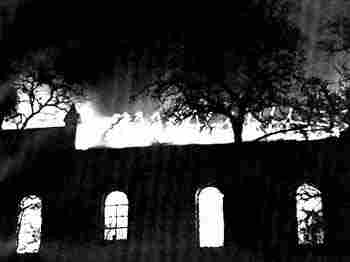
Kristallnacht -- literally, "Night of Crystal," is often referred to as the "Night of Broken Glass." The name refers to the wave of violent anti-Jewish pogroms which took place on
 November 9 and 10, 1938 throughout Germany, annexed Austria, and in areas of the Sudetenland in Czechoslovakia recently occupied by German troops.
November 9 and 10, 1938 throughout Germany, annexed Austria, and in areas of the Sudetenland in Czechoslovakia recently occupied by German troops.
Instigated primarily by Nazi Party officials and members of the SA (Sturmabteilungen: literally Assault Detachments, but commonly known as Storm Troopers) and Hitler Youth, Kristallnacht owes its name to the shards of shattered glass that lined German streets in the wake of the pogrom-broken glass from the windows of synagogues, homes, and Jewish-owned businesses plundered and destroyed during the violence. (USHMM - read more)
The events of November 9, 1938 pogrom sparked a wave of outrage among U.S. religious leaders. In the weeks following November 9, 1938, there were numerous editorials, radio broadcasts, and sermons. In a few cases – like the historic Church of the Pilgrimage in Plymouth, Massachusetts – local Christian clergy invited their Jewish colleagues to address their congregations for the first time. (USHMM - read more)
Photos:
Top: Photographer unknown. Synagogue Burning in Siegen, Germany. 1938. Photograph. The Pictorial History of the Holocaust, New York.
Middle: Photographer unknown. Bystanders view the smashed windows of a Jewish shop. 1938. Holocaust Education & Archive Research Team, Germany. Kristallnacht. Web. 9 Nov. 2010.
Bottom: Photographer unknown. Destruction of the Synagogue in Memel . 1938. Holocaust Education & Archive Research Team, Memel. Kristallnacht. Web. 9 Nov. 2010.


No comments:
Post a Comment